Opinions, Surf cultureIf Surfing Were a Village of 100 People

Take a hard look and you’ll find that the outward image of surfing isn’t that of the fair, balanced and accepting culture that many people would like it to be. If that world of surfing were condensed into a village of 100 people how would it compare to a similar village populated by the rest of the world? The answer, unfortunately, is not particularly well.
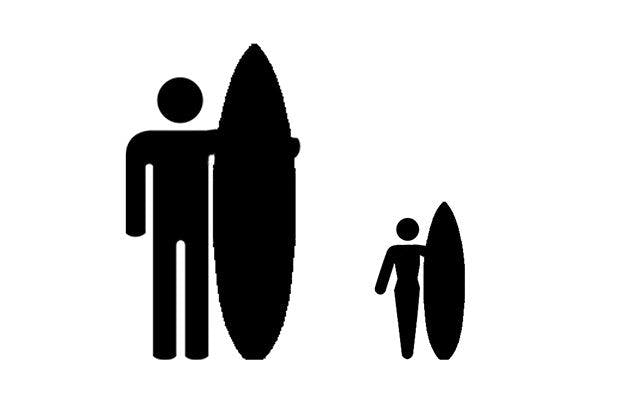
The gender balance of the World Surf League’s Championship Tours.
In the global village the gender balance is nearly 50:50. However, even with the growth in popularity of women’s competitive surfing over the past decade or more, the WSL Championship Tours rank the top 34 men and the top 17 women (a 2:1 split). It’s worth noting though that surfing is ahead of many other professional sports in terms of a gender balance in access, funding and exposure, and getting better – the UK’s governing body recently announced that male and female prize purses would be equal in future UK surfing events.
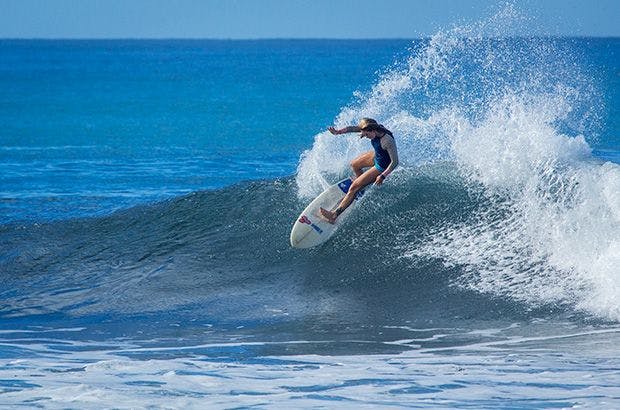
Surf Simply’s own Jessie Carnes flowing gracefully through a turn that any surfer would be proud of. Photo: Surfing Nosara.
Many “If the World Were a Village” infographics and lists fail to include disabled villagers, presumably because of the different and very broad interpretations of what constitutes being disabled. The World Health Organisation states that around fifteen percent of the earth’s population live with disabilities (around one billion people), making disabled people one of the world’s largest minority groups. Surfing is of course a physical pursuit, making a direct comparison unfair. This year, however, the ISA held the inaugural World Adaptive Surfing Championship for physically challenged surfers in La Jolla, California. Eighteen surfers from sixteen countries competed in four divisions (stand, upright, prone and assist), illustrating that whilst the disabled population of our surfer’s village may not be comparable to that of the World, surfing is becoming more accessible and opportunities are improving.
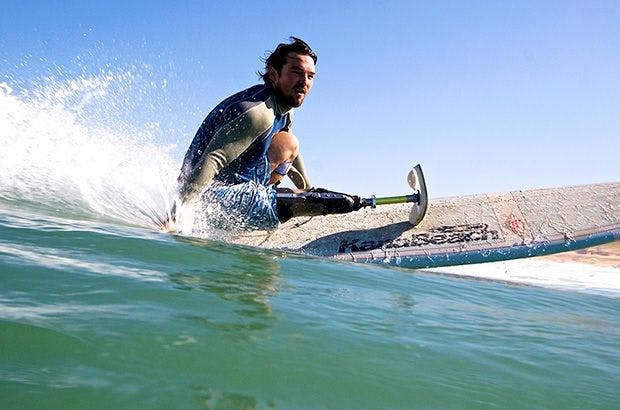
Ismael Guilliorit of Norway surfing in the ISA World Adaptive Surfing Championships. Photo: Olivier Pon
What about geography? Of course surfing is limited to coastlines and furthermore to coastlines open to swell. Despite wetsuit technology and the spirit of exploration, widespread participation is also limited to tropical and temperate latitudes. That doesn’t explain the fact however that several key countries dominate the image of surfing, and that the quality of the surf in a country doesn’t necessarily correlate with it producing high profile surfers. In terms of surf media and professional competition, America, Australia, Brazil and Hawaii dominate, with look-ins from European Nations, South Africa and New Zealand amongst others. There’s little sign of Indonesia, Japan or any other South or Central American nationals on a wide international scale, for example. We see plenty of “exotic” surf destinations in various forms of media. However the surfers in focus tend not to be the local standouts but instead visiting professionals from a first-world nation. Is surfing actually a lot narrower than the proudly counter-culture label that it has worn for the past 65 years or more? Some would argue that it is predominantly a pastime of the middle class: those who have the luxury of time.
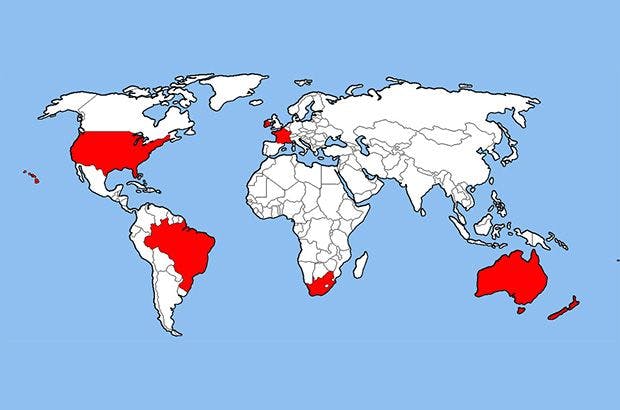
What the world of the WSL Men’s Championship Tour looks like.
This is where major sports do have surfing pipped – in soccer the English Premier League was made up of only 35% English players in 2014, whilst across Europe’s big five leagues in the same year the average foreign player ratio was 45.9%. That make’s European domestic soccer not only multi-national, but multi-lingual, multi-racial and multi-faith. This year the NBA received an A grade in a report by the Institute for Diversity and Ethics in Sport for the seventh year running, showing the diversity in race and gender at an organisational level in basketball.
It could be argued that a lack of international diversity in surfing is due to the comparatively small size of surfing as a professional sport. The resultant lack of funds prevents the investment needed to diversify the sport. Surfing features athletes who are individually endorsed and of course brands sponsor athletes who are stars in the country where they are looking to promote their product the most. Athletes from more affluent nations, with a healthy surf fashion industry, tend to have better media exposure and therefore the ability to create a career out of their passion for surfing.

Jeffreys Bay’s Joshe Faulkner demonstrating that world class waves produce world class home grown surfers. Photo: Etienne Venter.
If the world were a village of 100 people then there would be somewhere in the region of 60 Asians, 15 Africans, 14 people from the Americas and 11 Western Europeans; because of the geographical restrictions imposed by the nature of surfing (mentioned earlier) holding surfing up against these statistics is an unfair comparison, even if we assume “Asia” to be the Asia-Pacific region which, importantly in this case, includes Australasia.
The percentage of the world’s population who are LGBT has been historically problematic to assess. Partly due to the influence of social factors upon responses and partly because the science tells us that sexuality is not binary but rather a spectrum. The frequently quoted 10% figure has now been replaced with estimates under 5%. Either way here’s an uncomfortable spotlight to shine on surf culture, because even taking a conservative figure such as 2-3% shows that surfing is, well …conservative. There is not one openly gay surfer currently on the Men’s World Championship Tour. Historically homosexuality seems to be something of a taboo topic which is ironic when the image presented by surfing is one of free-spiritedness, individuality and non-conformism. A greater number of women surfers have thankfully felt comfortable being open about their sexuality including Serena Brooke and Keala Kennelly, although as a result the latter was allegedly excluded from the biopic “Soul Surfer” by the film production company Brookwell McNamara Entertainment, Inc. Whatever’s to blame for this, surfing and the institutions that represent it have failed to nurture a culture of acceptance regarding sexual orientation, and it’s time that was addressed so that surfing can get with the twenty first century.
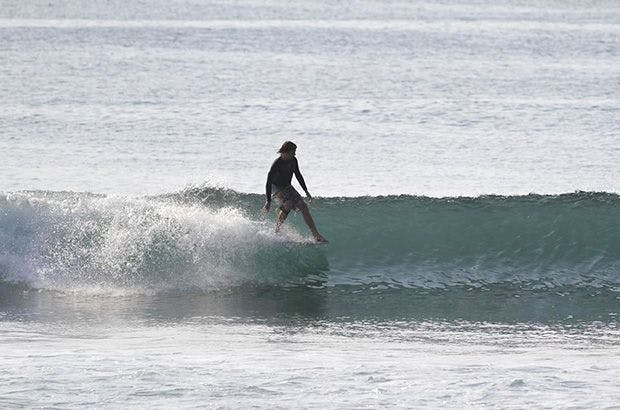
Seven-times Irish National Champion Craig Butler intends to qualify for the World Longboard Tour, and in doing so become the first openly gay male surfer on the World Tour.
So, we’ve covered gender and geography and sexuality. Comparing many other statistics risks taking us into the realm of speculation. Figures on malnutrition, access to clean drinking water and adequate sanitation are difficult to translate into our surfing village for example – surf zones in developing nations often have localised improved provision to service surf tourists, however in far too many cases the situation a mile inland is a very different story. You only have to look at the brilliant work that charities such as Surf Aid International or Waves For Water do in the Mentawaii Islands to see that what many surfers experience when they visit surf spots around the world probably isn’t representative of the reality for local people at those locations, including local surfers.
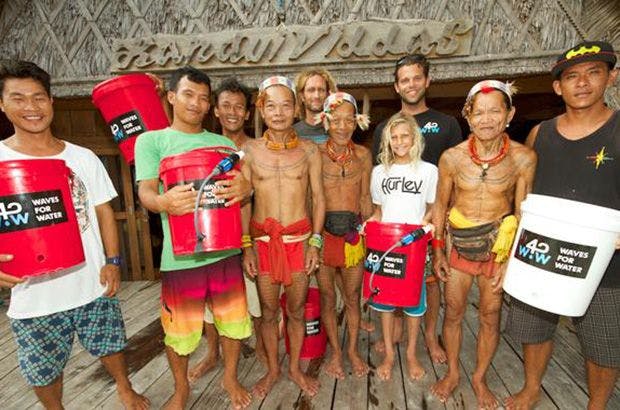
Waves For Water, in conjunction with Zachary Keenan and Kandui Villas, are currently implementing multiple clean water projects in the northern Mentawai Islands. Photo: Waves For Water
Nothing’s perfect in this world, and surfing is no exception. That’s ok though, as long as we can acknowledge and, in doing so, start to address some of those imperfections. Some merely require questions to be asked and an attitude shift or simple action at ground level – in the line-ups and on the sand – because we really ought to celebrate the beautiful diversity in the world of surfing far more.